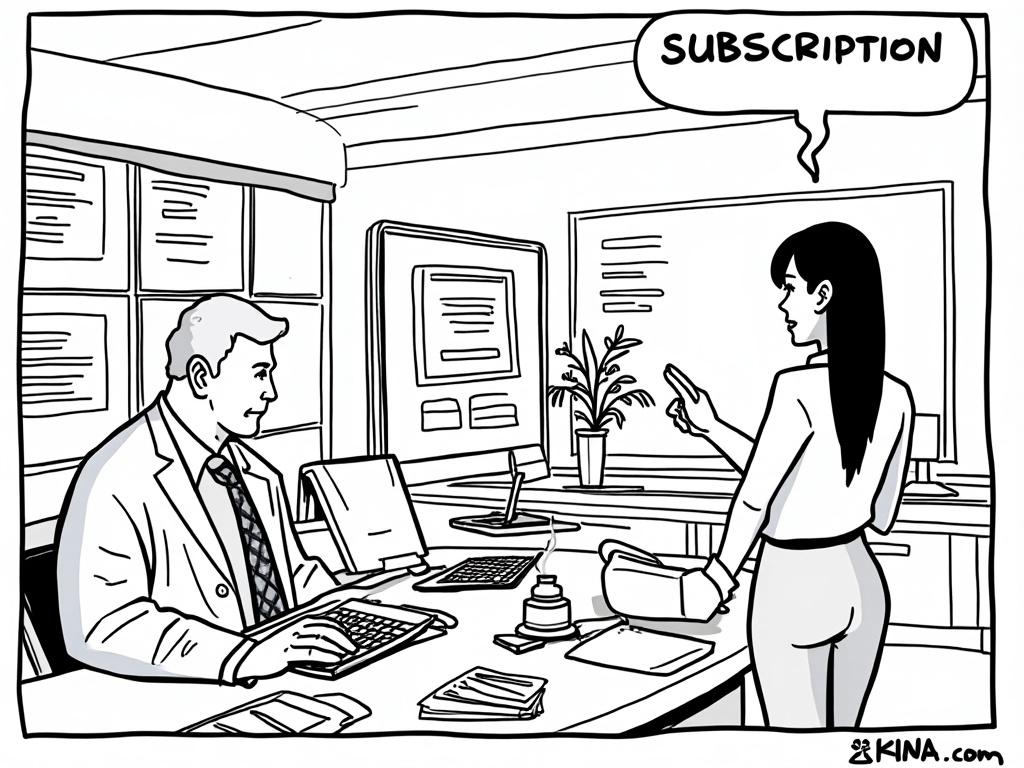
Modern POS Systems: Integrating Sales with Your Accounting Software
Reading time: 8 minutes
Ever wondered why your sales data and financial records feel like they’re speaking different languages? You’re not alone. The disconnect between point-of-sale systems and accounting software has frustrated business owners for decades—but modern integration solutions are changing everything.
Table of Contents
- Understanding POS-Accounting Integration
- Key Benefits of Seamless Integration
- Implementation Strategies That Work
- Common Challenges and Solutions
- Choosing the Right Systems
- Future-Proofing Your Integration Strategy
- Frequently Asked Questions
Understanding POS-Accounting Integration
Let’s cut straight to the core: POS-accounting integration means your sales transactions automatically flow into your accounting system without manual data entry. Think of it as creating a digital bridge between your cash register and your bookkeeper.
Here’s the reality check—according to recent industry research, businesses using integrated systems save an average of 15 hours per week on administrative tasks. That’s nearly two full workdays returned to focus on growth instead of data entry.
The Modern Integration Landscape
Today’s integration options fall into three main categories:
- Native Integrations: Built-in connections between specific POS and accounting platforms
- Third-Party Connectors: Middleware solutions that bridge different systems
- API-Based Custom Solutions: Tailored integrations for unique business needs
Quick Scenario: Imagine running a boutique coffee shop. Every latte sale, pastry purchase, and loyalty point redemption automatically updates your QuickBooks inventory, revenue tracking, and customer analytics. No spreadsheets, no manual reconciliation—just real-time financial clarity.
Real-Time Data Synchronization
The magic happens in the synchronization process. Modern systems can push transaction data within seconds, ensuring your financial picture stays current throughout the day.
Consider Maria’s Artisan Bakery—a real client case study. Before integration, Maria spent 3 hours every evening manually entering sales data into her accounting system. Post-integration, that time dropped to 15 minutes of review and verification. The result? More time for recipe development and customer engagement.
Key Benefits of Seamless Integration
Well, here’s the straight talk: Successful POS integration isn’t about fancy technology—it’s about operational efficiency and financial accuracy.
Accuracy and Error Reduction
Manual data entry introduces human error at an alarming rate. Studies show that manual financial data entry has an error rate of approximately 1-5%, which might sound small until you realize that means 1-5 mistakes for every 100 transactions.
Integration eliminates these errors by creating a single source of truth. Your POS captures the sale, and your accounting system receives identical data—no transcription mistakes, no missed entries, no duplicate records.
Time Savings and Productivity Gains
Let’s look at the numbers that matter:
| Task | Manual Process (Hours/Week) | Integrated System (Hours/Week) | Time Saved |
|---|---|---|---|
| Daily Sales Entry | 7 | 1 | 6 hours |
| Inventory Reconciliation | 4 | 0.5 | 3.5 hours |
| Tax Preparation | 3 | 0.5 | 2.5 hours |
| Financial Reporting | 5 | 1 | 4 hours |
| Total Weekly Savings | 19 | 3 | 16 hours |
Enhanced Financial Visibility
Real-time integration provides instant access to critical business metrics. You can see cash flow patterns, identify top-performing products, and track seasonal trends as they happen—not weeks later when you finally catch up on bookkeeping.
Implementation Strategies That Work
Ready to transform complexity into competitive advantage? Let’s dive into practical implementation approaches.
Phase 1: Assessment and Planning
Before diving into integration, conduct a thorough assessment of your current systems and processes. This isn’t about finding perfection—it’s about strategic navigation through your specific business needs.
Practical Roadmap:
- Audit Current Workflows: Document how data currently moves from sales to accounting
- Identify Pain Points: Where do delays, errors, or inefficiencies occur?
- Define Success Metrics: What specific improvements do you want to achieve?
- Budget Planning: Consider initial costs, ongoing subscription fees, and training time
Phase 2: System Selection and Setup
The selection process requires balancing functionality, cost, and compatibility. Consider TechStart Solutions, a growing IT consultancy that evaluated 12 different integration options before settling on a Square POS to Xero accounting integration. Their decision criteria focused on transaction volume capacity, reporting flexibility, and mobile accessibility.
Integration Complexity Comparison
Integration Setup Complexity by Platform Type
Phase 3: Testing and Deployment
Never go live without thorough testing. Create a parallel environment where you can run both old and new systems simultaneously for at least two weeks. This approach helps identify data mapping issues before they impact your financial records.
Pro Tip: The right preparation isn’t just about avoiding problems—it’s about creating scalable, resilient business foundations that grow with your success.
Common Challenges and Solutions
Let’s address the elephant in the room—integration isn’t always seamless. Here are the most common hurdles and practical solutions.
Data Mapping Mismatches
Different systems categorize transactions differently. Your POS might label something as “Food & Beverage,” while your accounting software expects “Cost of Goods Sold.” These mapping conflicts cause data to land in wrong accounts.
Solution Strategy: Work with your integration provider to create custom mapping rules. Document these rules clearly and review them quarterly as your business evolves.
Historical Data Migration
Moving existing data from legacy systems presents unique challenges. Consider the experience of Downtown Electronics, a family-owned retailer with 15 years of transaction history. They discovered that migrating everything at once would take weeks and potentially corrupt current operations.
Their solution? They integrated new transactions immediately while gradually migrating historical data in monthly chunks during off-peak hours. This approach maintained business continuity while preserving valuable historical insights.
Staff Training and Adoption
Technology adoption fails when staff don’t understand or trust new systems. Address this challenge through:
- Hands-on training sessions focused on daily tasks
- Creating simple reference guides for common procedures
- Designating “system champions” who can help colleagues adapt
- Maintaining parallel systems temporarily to build confidence
Choosing the Right Systems
System selection determines integration success more than any other factor. Focus on compatibility, scalability, and support quality rather than feature count.
Compatibility Assessment
Before falling in love with a particular POS or accounting system, verify integration capabilities. Some combinations work beautifully together, while others require expensive workarounds or compromise functionality.
Research native integrations first—they typically offer the most reliable performance and comprehensive data sync. Popular combinations include:
- Square POS + QuickBooks Online: Excellent for retail and restaurants
- Shopify POS + Xero: Ideal for omnichannel retailers
- Toast POS + QuickBooks: Purpose-built for food service
- Lightspeed + Various Accounting Platforms: Flexible for diverse industries
Scalability Considerations
Your integration should handle growth gracefully. Consider transaction volume limits, user account restrictions, and feature availability at different pricing tiers. What works for 100 transactions daily might buckle under 10,000.
Support and Maintenance
Integration support quality varies dramatically between providers. Look for:
- 24/7 technical support availability
- Clear documentation and setup guides
- Regular software updates and security patches
- Active user communities and forums
Remember, you’re not just buying software—you’re entering a long-term partnership that affects your daily operations.
Future-Proofing Your Integration Strategy
Technology evolves rapidly, and your integration approach should accommodate change rather than resist it.
Emerging Integration Technologies
Artificial intelligence and machine learning are beginning to enhance POS-accounting integrations through:
- Predictive categorization: Systems that learn to classify transactions automatically
- Anomaly detection: Automated alerts for unusual transaction patterns
- Cash flow forecasting: Real-time predictions based on historical integration data
Cloud-First Architecture
Cloud-based systems offer superior integration flexibility compared to on-premise solutions. They update automatically, scale dynamically, and typically offer better API access for custom integrations.
As businesses increasingly adopt mobile-first operations, cloud integrations ensure your financial data stays synchronized regardless of where transactions occur—in-store, online, or at pop-up locations.
Frequently Asked Questions
How long does it typically take to implement POS-accounting integration?
Implementation timelines vary significantly based on system complexity and business size. Simple native integrations (like Square to QuickBooks) can be operational within 1-2 days, while custom API solutions might require 2-6 weeks. The key is thorough planning and testing—rushing implementation often leads to data issues that take longer to fix than the original setup would have taken.
What happens to my data if the integration stops working?
Modern integration platforms typically include data backup and recovery features. However, you should maintain independent backups of both POS and accounting data. Most systems queue failed transactions and retry automatically, but having a manual backup process ensures business continuity during extended outages. Always discuss disaster recovery procedures with your integration provider before going live.
Can I integrate multiple POS locations with one accounting system?
Yes, most modern accounting systems can handle multiple POS locations through consolidated reporting and location-specific tracking. This approach provides centralized financial oversight while maintaining operational independence for each location. Consider systems that offer location-based reporting, inventory management, and staff access controls to maximize multi-location benefits.
Your Integration Roadmap: Next Steps
The journey from disconnected systems to seamless integration doesn’t happen overnight, but every step forward compounds your operational efficiency. Here’s your practical action plan:
Immediate Actions (This Week):
- Audit your current data entry processes and calculate time spent on manual tasks
- Research native integrations between your existing POS and accounting systems
- Identify your top three integration priorities (time savings, accuracy, reporting, etc.)
Short-term Planning (Next Month):
- Request demos from 2-3 integration providers that match your system combination
- Create a test environment to evaluate integration options without disrupting operations
- Develop staff training materials for your chosen integration approach
Long-term Vision (Next Quarter):
- Implement your chosen integration with parallel system operation for validation
- Establish regular review processes to optimize data mapping and reporting
- Plan for scalability as your business grows and technology evolves
As artificial intelligence and machine learning continue reshaping business operations, integrated POS-accounting systems will become even more powerful, offering predictive insights and automated decision-making capabilities that today’s pioneers will be perfectly positioned to leverage.
What’s your biggest barrier to integration right now—technical complexity, budget constraints, or simply finding time to implement change? Remember, the cost of inaction often exceeds the investment in improvement, and your future self will thank you for taking the first step today.



